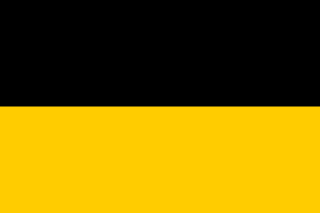 W
WOttoman Hungary describes the history of southern and central Medieval Hungary which was conquered and ruled by the Ottoman Empire from 1541 to 1699. The Ottoman rule was scattered and covered mostly the southern territories of the former medieval Kingdom of Hungary, namely almost the entire region of the Great Hungarian Plain and Southern Transdanubia.
 W
WThe Kingdom of Hungary between 1526 and 1867 was outside the Holy Roman Empire but part of the lands of the Habsburg Monarchy that became the Austrian Empire in 1804. After the Battle of Mohács in 1526, the country was ruled by two crowned kings. Initially, the exact territory under Habsburg rule was disputed because both rulers claimed the whole kingdom. This unsettled period lasted until 1570 when John Sigismund Zápolya abdicated as King of Hungary in Emperor Maximilian II's favor.
 W
WDonat John Count Heissler of Heitersheim was an Imperial and Royal Marshal of the Habsburg empire. He was deeply involved in the conflict between the Austrian and Turkish empires. He was born in 1648 and died at Szeged on 1 September 1696.
 W
WKuruc, also spelled kurutz, refers to a group of armed anti-Habsburg insurgents in the Kingdom of Hungary between 1671 and 1711.
 W
WOttoman Hungary describes the history of southern and central Medieval Hungary which was conquered and ruled by the Ottoman Empire from 1541 to 1699. The Ottoman rule was scattered and covered mostly the southern territories of the former medieval Kingdom of Hungary, namely almost the entire region of the Great Hungarian Plain and Southern Transdanubia.
 W
WThurzó was a Hungarian noble family from the 15th century to the first half of the 17th century. It was in Kraków that the rise of the Thurzó family began, and the family in turn boosted that city into an important center of business, science, and Renaissance high culture. The family's long-term involvement in capitalist enterprises, high-level politics, the affairs of the Church, and its patronage of the arts made the family rich, famous and powerful well beyond the city. Its achievements resembled the Medici family in Italy and France, perhaps the Fugger family in Germany. Key family patriarchs were János Thurzó (1437–1508) and his sons János V (1466–1520), bishop of Wrocław, and Stanislav I (1471–1540), bishop of Olomouc, and Palatine György who founded town Turzovka.
 W
WThe Principality of Transylvania was a semi-independent state, ruled primarily by Hungarian princes. Its territory, in addition to the traditional Transylvanian lands, also included the other major component called Partium, which was in some periods comparable in size with Transylvania proper. The establishment of the principality was connected to the Treaty of Speyer. However Stephen Báthory's status as king of Poland also helped to phase in the name Principality of Transylvania. It was usually under the suzerainty of the Ottoman Empire; however, the principality often had dual vassalage in the 16th and 17th centuries.